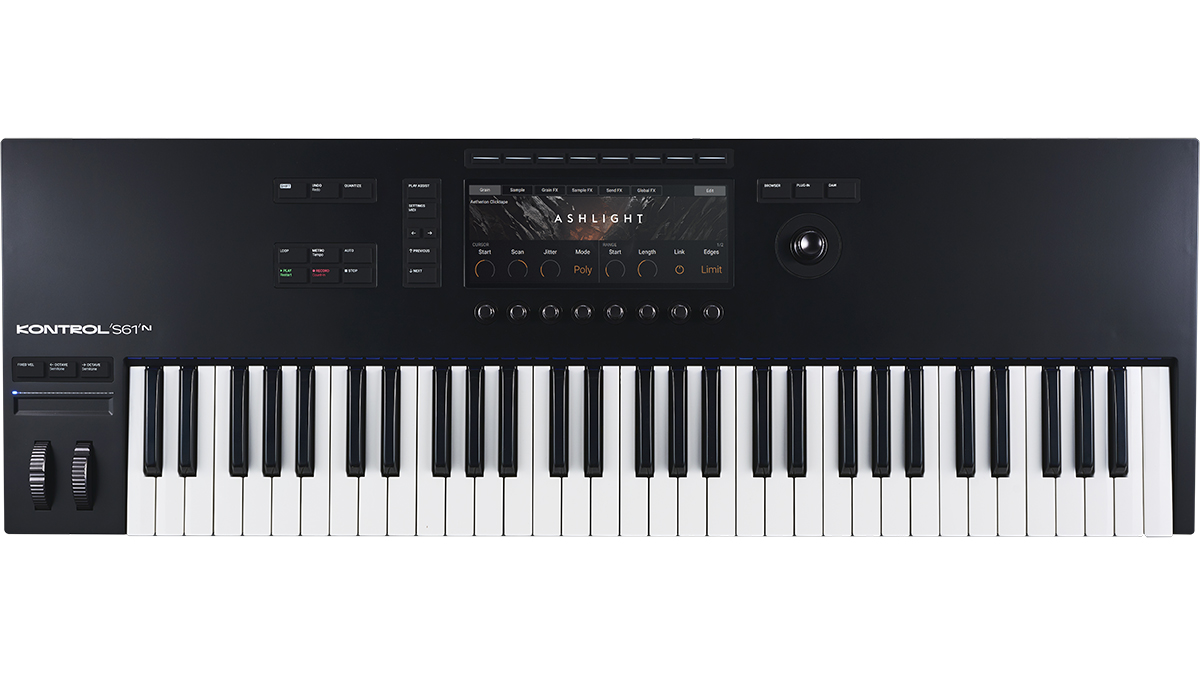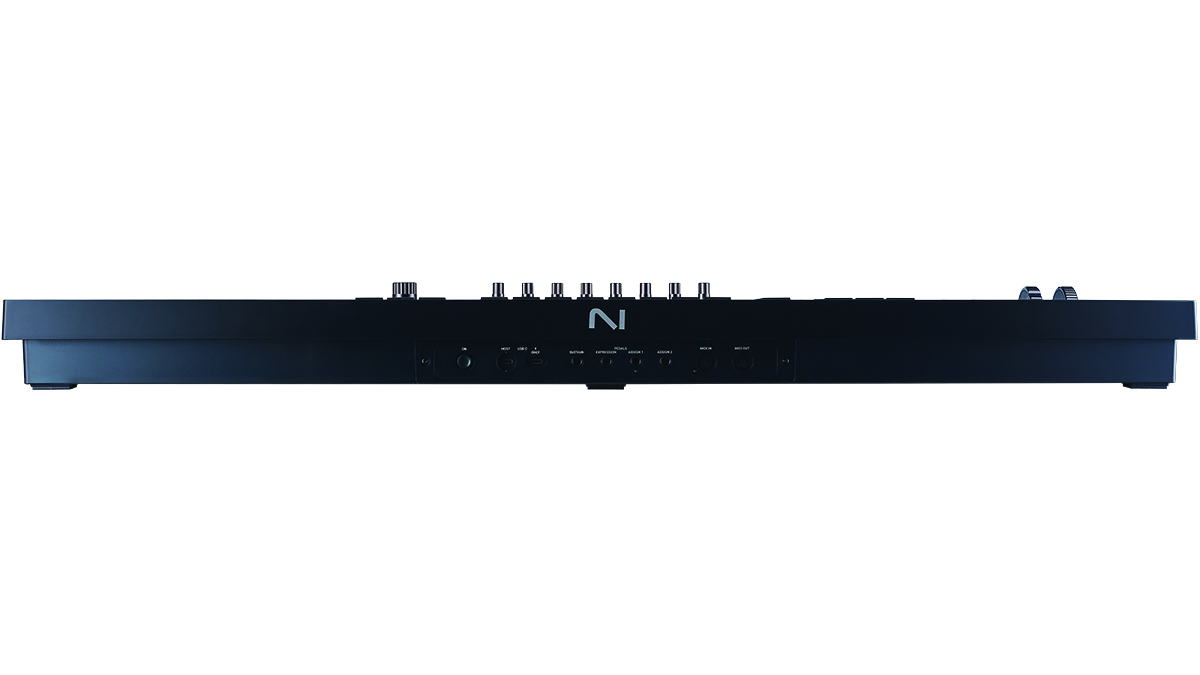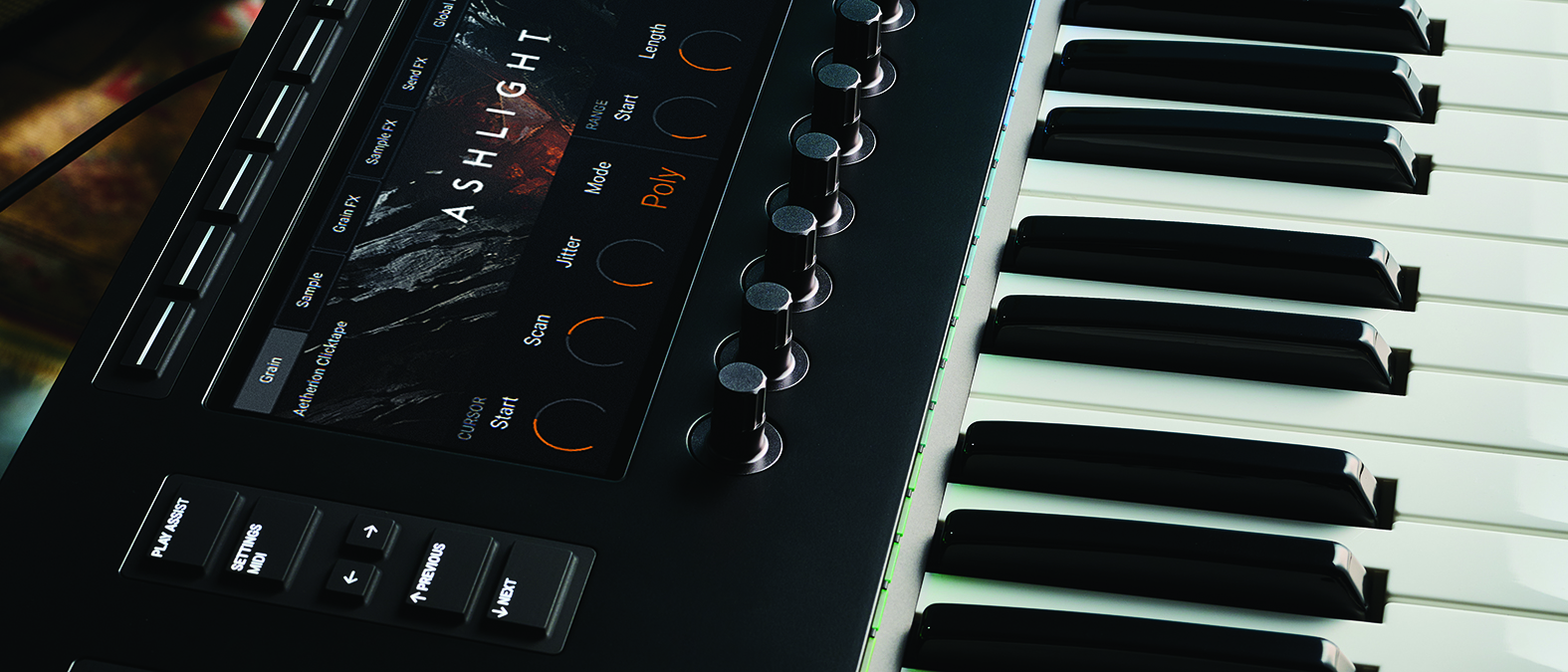MusicRadar Verdict
Likely only heavy Kontakt users will consider the Mk3 upgrade, but if you’re new to Kontrol keyboards, the Mk3 remains a serious contender.
Pros
- +
Far tighter Kontakt integration.
- +
Polyphonic aftertouch offers new ways to use software.
- +
New look and feel is a fair upgrade.
Cons
- -
Some continued reliance on Komplete Kontrol software makes integration a lot less practical.
MusicRadar's got your back
NI Kontrol S61 Mk3: What is it?
Six years on from its previous version, the ‘Komplete Kontrol’ keyboard range is now updated and renamed, with an expanded set of features.
The Kontrol Mk3 brings a new, more robust spin on the MIDI keyboard’s chassis, and an interesting new look, right on down to the level of typography. The light guides are crisper and bolder. Getting hands-on, the feel of the buttons remains mostly the same as the Mk2, while the knobs and wheels have been replaced with anodised aluminium versions. Let’s not forget the keys, of course, which feel comparable to most other pro MIDI controllers on the market.

Last but not least, the two screens of the Mk2 have been merged into one larger one for the Mk3. The screen is crisper, larger, and seems brighter in use; no drawbacks. While some have complained that it’s not a touchscreen, this feels more like a decision than an omission. Those knobs and buttons are there to offer the tactile accuracy that musicians crave, not a return to smudgy, unresponsive finger-pecking.

NI Kontrol S61 Mk3: Performance and verdict
One headline feature of the Mk3 is its expanded integration. While the Mk2 had to communicate via the Komplete Kontrol software as an intermediary, NI has given the Mk3 more capabilities to do things itself. The upshot? Load an instance of Kontakt on an active MIDI channel, and the keyboard will inherit the chosen instrument’s parameters for use with the screen and knobs.
Kontakt developers can script what you’ll get access to on the screen, so this is quite a future-proof setup. Considering the number of working composers who rely on Kontakt to earn a living, it’s no understatement to say that this can be a game-changer for some. For others, it shows the (hopefully) road towards removing the shackles of Komplete Kontrol and actually using the keyboard directly with any and all NKS2-compatible plugins.
Polyphonic aftertouch is another new feature that sees NI keeping up with modern demands in instrument design. Their implementation works great and gives the keyboard access to more expressive softsynth features. No full-on MPE is offered, nor does it claim to. Instead, it’s a nod to modern instrument capabilities that don’t sacrifice functionality for those who “just want a normal keyboard”.
A nod to modern capabilities that doesn’t sacrifice functionality
So who should be seriously looking into the Kontrol S61 Mk3 as a purchase? Those who want to take things ‘out of the box’ and who are already somewhat invested in NI’s ecosystem should see it as a serious contender, not a cheap option. Those who own a Mk2 already will be hard to tempt, although heavy Kontakt users may consider it worth their while, especially in the case of those who are moving up to 61 keys from a smaller model.
MusicRadar verdict: Likely only heavy Kontakt users will consider the Mk3 upgrade, but if you’re new to Kontrol keyboards, the Mk3 remains a serious contender.
NI Kontrol S61 Mk3: Hands-on demos
Native Instruments
Andertons Synths, Keys and Tech
loopop
Bolo Da Producer
NI Kontrol S61 Mk3: Specifications
- KEY FEATURES: Kontakt integration, OS now built into hardware rather than relying on Komplete Kontrol software I/O: Bus-powered USB-C; USB MIDI; 4 x assignable TRS pedal inputs; MIDI in and out.
- DIMENSIONS: 86 x 967 x 323mm.
- WEIGHT: 6kg.
- CONTACT: Native Instruments

A former Production Editor of Computer Music and FutureMusic magazines, James has gone on to be a freelance writer and reviewer of music software since 2018, and has also written for many of the biggest brands in music software. His specialties include mixing techniques, DAWs, acoustics and audio analysis, as well as an overall knowledge of the music software industry.
“How daring to have a long intro before he’s even singing. It’s like psychedelic Mozart”: With The Rose Of Laura Nyro, Elton John and Brandi Carlile are paying tribute to both a 'forgotten' songwriter and the lost art of the long song intro
“The verse tricks you into thinking that it’s in a certain key and has this ‘simplistic’ musical language, but then it flips”: Charli XCX’s Brat collaborator Jon Shave on how they created Sympathy Is A Knife
“It shows enough promise to become the controller to rule them all”: Melbourne Instruments Roto-Control review










